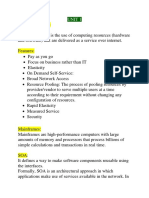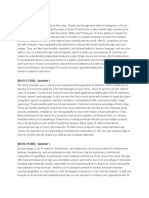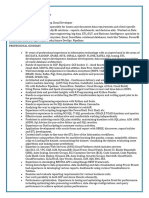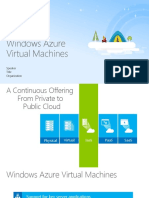0% found this document useful (0 votes)
24 views16 pagesServer Notes
The document covers key concepts in IT infrastructure, including Active Directory and Group Policies for user management, server virtualization for resource efficiency, and cloud migration for enhanced flexibility and security. It also discusses cloud deployment models, forensic investigations in cloud environments, and the importance of data backup, disaster recovery, and business continuity. Each section highlights essential features, examples, and tools relevant to modern IT practices.
Uploaded by
ishuu0220Copyright
© © All Rights Reserved
We take content rights seriously. If you suspect this is your content, claim it here.
Available Formats
Download as PDF, TXT or read online on Scribd
0% found this document useful (0 votes)
24 views16 pagesServer Notes
The document covers key concepts in IT infrastructure, including Active Directory and Group Policies for user management, server virtualization for resource efficiency, and cloud migration for enhanced flexibility and security. It also discusses cloud deployment models, forensic investigations in cloud environments, and the importance of data backup, disaster recovery, and business continuity. Each section highlights essential features, examples, and tools relevant to modern IT practices.
Uploaded by
ishuu0220Copyright
© © All Rights Reserved
We take content rights seriously. If you suspect this is your content, claim it here.
Available Formats
Download as PDF, TXT or read online on Scribd
/ 16






















































































